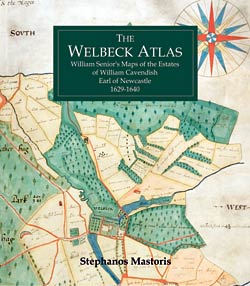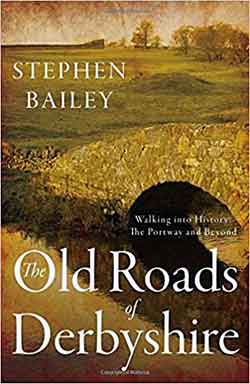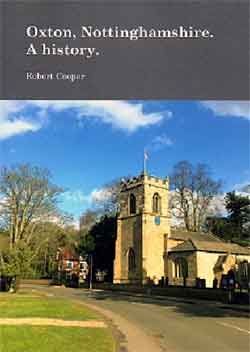Book reviews, Winter 2019/2020
Beyond the Publication: increasing interest in The Welbeck Atlas

Although it is now over two-and-a-half years since the Record Series published the digital edition of the Welbeck Atlas, there is increasing interest in this volume (of which a few copies are still available!) both from within and beyond Nottinghamshire. In June 2018 I gave a talk on the background to the Atlas at the Lowdham Book Festival. This focussed on the life of William Cavendish, the first Earl of Newcastle upon Tyne, who commissioned the Atlas in 1629 to create a record of his extensive estates of around 100,000 acres in seven English counties. About 50 people attended the talk and a fair number of copies of the book were sold afterwards and on the Thoroton Society bookstall at the festival.
One of the readers of my edition of the Atlas was Dr Sarah Bendall, the leading authority on early estate surveying and mapping. Dr Bendall is based at Emmanuel College, Cambridge, and organises termly seminars there on the history of cartography. She kindly invited me to lead one of these in February 2019, where I discussed the technical aspects of the maps in the Atlas and the construction of the volume itself. Around 30 people attended, including the former Head of Map Collections at the British Library and the Editor of Imago Mundi, the main international journal for the history of cartography.
In late 2018 Imago Mundi had already requested a review copy of the Atlas and it is hoped that this will be published soon. In March of 2019 a glowing account of the Atlas appeared in the IMCoS Journal (International Map Collectors Society). This and my lecture in Cambridge aroused the interest of the Editor of IMCoS Journal who then commissioned a long article on the Atlas. Here I concentrated on the map-making side of things and especially the life and work of William Senior, who was commissioned by William Cavendish to create the Welbeck surveys between 1629 and 1640, and had been the estate surveyor and cartographer to the Devonshire branch of the Cavendish family from 1609 to 1628.
This article was published at the end of September 2019 as the leading paper in the journal (with an image of the Welbeck estate map on the cover) and has been lavishly illustrated with ten other colour plates.
During 2018 the Society agreed to requests to reproduce pages from the Atlas for the Kirk Langley neighbourhood plan and a firm of conservation architects in Buxton. We have also approved making the digital Atlas available as a learning resource on the intranet of Michigan State University. But perhaps most important and gratifying amongst all of this interest is to see the number of citations of the Atlas starting to appear in historical and archaeological articles in the Transactions. In this way the edition of the Atlas is serving its core purpose of making this important historical resource easily available to current and future researchers. From my experience after the publication of the 1609 Sherwood Forest survey and map in the late 1990s, these citations will really proliferate about 5 years after publication of the Atlas.
Steph Mastoris
The old roads of Derbyshire by Stephen Bailey. (ISBN 978-1-78901-843-1 Matador 2019)

This volume is the second on the theme of Derbyshire roads and trackways, the first entitled The Derbyshire Portway. Both books stray into Nottinghamshire in following the routes, making them even more interesting to our members. Indeed the book will be interesting not only to historians but also to walkers and countryside lovers.
Stephen has undertaken 20 years of research on his subject and this volume sets out the history of road network development from the earliest prehistoric tracks to the advent of tourism in Victorian times. We read of the many creators and users of the trackways - those on foot such as jaggers and their packhorse trains, pilgrims and drovers, pedlars and tramps, and those who rode in wagons and coaches - they must have been fairly rough rides.
For serious walkers the book includes a walking guide to the over sixty miles of the Derbyshire Portway - a route ancient before the Romans came and still able to be followed today from the early part which runs from Sneinton to Stapleford!
Barbara Cast
Oxton, Nottinghamshire : A History (Privately Published, 2019) Robert Cooper
(Copies available from the author: email at bobxcooper@gmail.com for further details.)

Robert Cooper has prepared this study of Oxton according to the conventions laid down by the Victoria County History in its newly established ‘Shorts’ series - in effect individual parish studies published in paperback format. He even notes that any deviations from the VCH format are ‘mine alone’. The book begins with introductory matter including location and physical boundaries, geology, population, communications (roads and railways) and landscape and settlement. There is a brief description of the church and a plan of the village which also has a picture of the now demolished Oxton Hall. The village has been a conservation area since 1989. Next comes landownership and the descent of the manor since Domesday Book - classic VCH territory. This is followed by chapters on the economic history of Oxton, the social history of the village, local government, and religious life (both Church of England and nonconformist).
The book ends with a most un-VCH-like discussion of the contrast between Oxton today and one hundred years ago, in which Cooper looks at how the community, and the buildings, have changed since the First World War. The book is well researched and written, and I would like to see more ‘Shorts’ of Nottinghamshire villages and towns, but quite where the book stands is open to question. Cooper thanks Philip Riden (VCH county editor for Derbyshire and Nottinghamshire) for supervising the writing of the book, but it does not appear to have been edited in, or to have the approval of, VCH
Central Office, and it has no ISBN number, so it will not be picked up by the usual search engines. I was hoping to greet this as heralding the revival of the VCH in Nottinghamshire after a 110 year absence. Shame. But it is still an interesting book, full of information and it gives us an idea of how an agricultural village ten miles from the centre of Nottingham has changed radically in the course of the twentieth century.
John Beckett